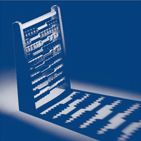Background
In the spring budget last week the Government announced that from April 2023 until the end of March 2026, companies can claim 100% capital allowances on qualifying plant and machinery investments. Full expensing allows companies to write off the cost of investment in one go, with every pound invested resulting in a tax cut of up to 26.5p.
Detail
Under the new Capital Allowances rules businesses will now benefit from:
Full expensing
This offers 100% first- year allowances on qualifying main rate plant and machinery investments for three years from 1 April 2023 – 31 March 2026. This is available to companies subject to corporation taxonly. Therefore unincorporated businesses cannot claim, but such businesses are entitled to claim the Annual Investment Allowance (AIA) which offers the same benefits as detailed below. The plant and machinery must be new and unused, must not be a car, given to the company as a gift, or bought to lease to someone else. Most tangible capital assets, other than land, structures and buildings, used in the course of a business are considered plant and machinery for the purpose of claiming capital allowances. Plant and machinery that may qualify for full expensing includes:
- Machines such as computers, printers, lathes and planers;
- Office equipment such as desks and chairs;
- Commercial vehicles such as vans, lorries and tractors (but not cars);
- Warehousing equipment such as forklift trucks, pallet trucks, shelving and stackers;
- Tools such as ladders and drills;
- Construction equipment such as excavators, compactors, and bulldozers;
- Some fixtures such as kitchen and bathroom fittings and fire alarm systems in non residential property.
Given the increase in Corporation tax, up to 25%, the 100% first year allowance detailed above has the same approximate tax saving for Companies as the super-deduction of 130% for the two years ended 31 March 2023. This can be illustrated with an example. Let’s say a company spends £100,000 on main rate equipment, prior to March 2023, the corporate tax deduction will be £130,000. Deducting £130,000 from your taxable profits will save the company up to 19% – £24,700. If the expenditure was incurred between 1 April 2023 and 31 March 2026, the corporation tax deduction will be £100,000. Deducting £100,000 from your taxable profits will save the company up to 25% – £25,000.
Special Rate Expenditure
This allows a 50% first-year allowance for expenditure by companies on new special rate assets including long life assets for the three years from 1 April 2023 – 31 March 2026. A company can claim a deduction from taxable profits that is equal to 50% of their qualifying expenditure in the year that the expenditure is incurred. Capital allowances can be claimed on the balance of expenditure in subsequent accounting periods at the 6% rate of Writing Down Allowances (WDAs) for special rate expenditure.
Annual Investment Allowance (AIA)
This provides 100% first-year relief for plant and machinery investments up to £1 million, which is available for all businesses including unincorporated businesses and most partnerships. The £1 million AIA was previously a temporary limit but has now been made permanent. Expenditure on second-hand assets and those bought to lease to someone else can still qualify for the AIA.
Disposals
If a company sells an asset on which it has claimed either full expensing or 50% first-year allowance, there are special rules which apply. For the disposal of an asset on which a company has claimed full expensing, the company will be required to bring in an immediate balancing charge equal to 100% of the disposal value. So if a company sells an asset for £10,000 on which they had claimed full expensing, they would be required to increase their taxable profits by £10,000. For the disposal of an asset on which a company has claimed 50% first year allowance, the company will be required to bring in a balancing charge equal to 50% of the disposal value. The remaining 50% is treated in the normal way so is deducted from the special rate pool balance. Hence if the company sells an asset for £10,000 on which they had claimed the 50% first year allowance they would be required to increase their taxable profits by £5,000 with the remaining £5,000 being deducted from the pool.
If you would like to discuss how the capital allowances above could affect you and your business please contact our Tax Director Jenny Marks.
To see our other news items please visit our Muras Baker Jones – Blog.



